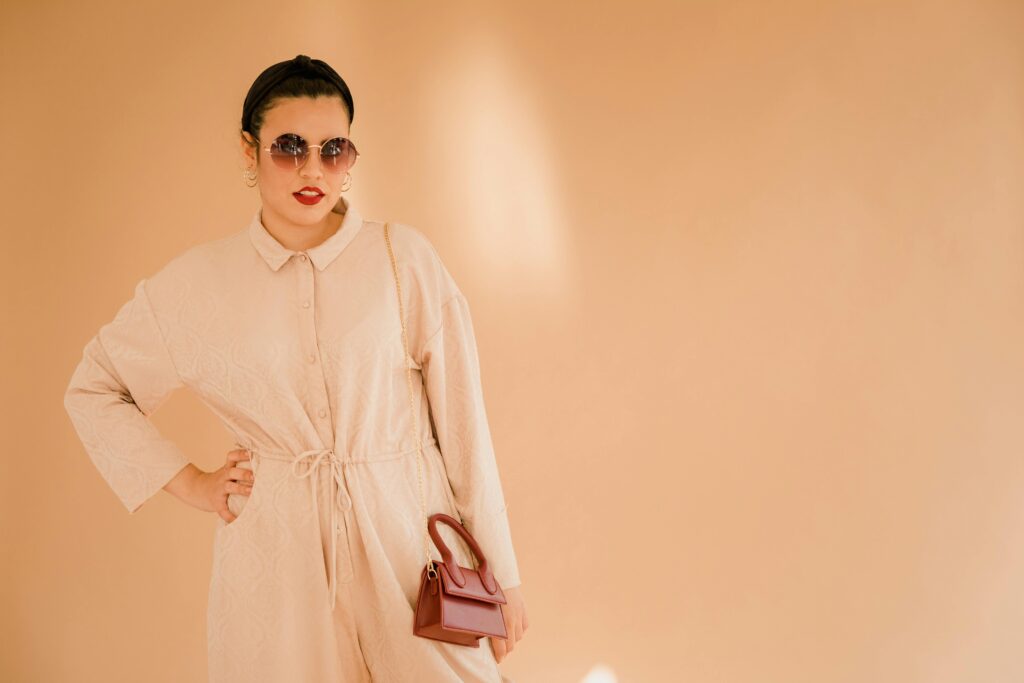The fashion industry constantly seeks innovation. Generative Artificial Intelligence (Generative AI) is now emerging as a powerful tool, particularly for sustainable design. This technology offers new ways to create, reduce waste, and speed up development. This post explores what Generative AI is, fashion’s environmental challenge, and how this technology provides solutions.
The Environmental Impact of the Fashion Industry

The fashion industry is a powerhouse of creativity and expression, but it faces an undeniable crisis: its immense environmental footprint. This isn’t hyperbole – the numbers are staggering.
According to the UNEP, fashion is responsible for 10% of global carbon emissions–more than all international flights and maritime shipping combined. McKinsey & Company further emphasizes the urgency, projecting emissions could surge by 50% by 2030 without drastic intervention.
Fashion faces significant sustainability challenges:
- High Waste: Massive pre-production waste (unsold samples, fabric scraps) and post-consumer waste (landfilled garments).
- Resource Intensive: Heavy water usage and pollution from dyeing and finishing fabrics.
- Carbon Footprint: Global supply chains contribute heavily to greenhouse gas emissions. Reducing physical sampling and overproduction is crucial.
These issues show why the industry needs better, more sustainable practices. That’s where generative AI comes in.
What is Generative AI
Generative AI refers to a type of artificial intelligence that creates new, original content. Unlike standard AI that analyzes data, generative AI learns patterns from existing information–like images, text, or designs–and generates similar but unique outputs. Think of it as an AI generator capable of producing novel visuals, concepts, or designs based on its training. Popular examples include tools for generating images from text descriptions.
What Is Generative AI in Fashion
Generative AI in fashion is a branch of artificial intelligence that creates new, original fashion-related content—such as designs, patterns, virtual try-on, or styling suggestions—by learning from vast amounts of existing fashion data. Unlike traditional AI that might analyze trends or predict sales, generative AI actively generates fresh ideas, acting as a creative partner for designers, brands, and retailers.
How Generative AI Can Revolutionize Fashion Design
Generative AI can be a powerful to create a more sustainable fashion industry. It can simulate garment appearance and fit on diverse body types, reducing physical samples and production waste. With Fashion Diffusion, you can visualize designs on various virtual models, experiment with styles, and make informed decisions before cutting any physical material.
Virtual Prototyping to Reduce Waste
Generative AI enables virtual prototyping, minimizing the need for multiple physical samples. This significantly cuts production waste and helps create a more sustainable design process. Fashion Diffusion allows you to test and refine your designs virtually, saving time and resources.
Personalized, On-Demand Fashion
AI-driven platforms can analyze user preferences, body data, and environmental factors to create custom designs. This shift from mass production to on-demand fashion minimizes overproduction and waste. Fashion Diffusion enables you to create designs tailored to individual preferences, embracing a more sustainable and personalized approach.
Sustainable Material Optimization
AI can analyze fabric databases and recommend sustainable materials based on design requirements. It can also predict material performance, ensuring durability and reducing returns. Fashion Diffusion helps you incorporate sustainable materials into your designs by providing valuable insights and recommendations.
Accelerating the Design-to-Production Pipeline
Generative AI tools streamline the design process, allowing faster prototyping and iteration. This efficiency reduces energy consumption and resource use across the production pipeline. Fashion Diffusion’s AI-powered tools help you accelerate your design process, bringing collections to market more quickly and efficiently.
AI-Powered Supply Chain Efficiency
AI enhances transparency and traceability by tracking materials from source to shelf. Brands can identify carbon-intensive stages and optimize logistics to lower their environmental impact. Fashion Diffusion contributes to supply chain efficiency by providing valuable data and insights.
Enhancing Creativity While Embracing Eco-Ethics
Generative AI empowers designers to explore a wider range of concepts quickly, allowing more room to integrate sustainable elements into their work. Fashion Diffusion helps you expand your creative horizons while staying true to eco-ethical principles.
Brands are Using Generative AI in Fashion
Fashion brands are already weaving generative AI into every stage of the value chain:
- Tommy Hilfiger teamed up with IBM and FIT to feed 15 years of runway photos and fabric data into an AI system that spits out mood boards, color palettes, and first-draft silhouettes—cutting weeks off the concept phase.
- H&M’s Circular Innovation Lab uses generative models to shape garments for maximum recyclability and to upcycle dead-stock fabrics into new styles, slashing both waste and design lead-times.
- Revery AI supplies retailers with generative virtual try-on tech that renders outfits on diverse body types in real time, reducing returns and boosting shopper confidence.
Getting Started with Fashion Diffusion
Generative AI is transforming the fashion industry, making sustainability more achievable than ever. By combining creativity with advanced technology, it paves the way for a future where fashion is both beautiful and environmentally responsible.
Fashion Diffusion offers a range of tools and features to help you begin your sustainable fashion design journey. You can experiment with AI-powered tools like SketchAI, which transforms hand-drawn sketches or digital designs into polished fashion illustrations. The intuitive interface requires no technical skills, allowing you to focus on your creativity.
Are you ready to embark on this exciting journey with Fashion Diffusion? Start now and discover how generative AI can elevate your sustainability goals and revolutionize your fashion design process.
FAQs
No. AI fashion design tools like Fashion Diffusion are made to be simple. You just need to describe what you want in words, and the AI does the rest.
Strong fashion sense (understanding silhouettes, fabrics, and construction) and the ability to write clear, descriptive prompts are key. Deep technical AI knowledge isn’t usually required.
By enabling extensive digital prototyping and design exploration, it drastically reduces physical samples (cutting fabric waste and transport emissions), minimizes overproduction risks, and conserves water (by reducing cotton/synthetic production needed for samples).





